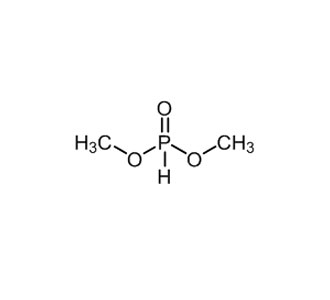CAS No. 762-04-9 corresponds to Diphenylphosphoryl Azide (DPPA), an efficient and widely used phosphoryl azide reagent that has gained significant importance in pharmaceutical manufacturing, fine chemical synthesis, peptide chemistry, and academic organic research. Because DPPA plays a role in key bond-forming reactions where product purity and stereochemical accuracy are crucial, selecting reliable CAS NO 762-04-9 Manufacturers is essential to ensure consistent quality, stability, and safe handling throughout the synthesis process.
Chemical Identity and Functional Behavior
Diphenylphosphoryl Azide serves as an activating and coupling agent, primarily enabling transformations involving carboxylic acid activation, formation of amide bonds, and conversion to isocyanates through acyl azide intermediates. It is recognized for its ability to offer high yield efficiency, reduced racemization, and compatibility with mild reaction conditions, making it suitable for sensitive and structurally complex synthetic targets.
Important Chemical Attributes:
- Molecular Formula: C₁₂H₁₀N₃O₂P
- Core Function: Phosphoryl azide-based coupling reagent
- Typical Use: Amide bond formation, urea synthesis, peptide activation
- Key Advantage: Produces cleaner reaction outcomes with reduced by-products
DPPA’s selectivity and efficiency make it an attractive choice in multi-step synthesis workflows, particularly where delicate or chiral structures must be preserved.
Applications in the Pharmaceutical Industry
The pharmaceutical sector frequently involves the assembly of amide, carbamate, and urea functional groups, which form the backbone of many API structures, peptide therapeutics, and bioactive small molecules. DPPA facilitates these transformations in a controlled and reproducible manner.
Peptide Synthesis
Diphenylphosphoryl Azide supports both solution-phase and solid-phase peptide assembly. It is valued for its ability to minimize racemization and avoid excessive side reactions, leading to cleaner peptide elongation steps. This is crucial in synthesizing therapeutic peptides used to treat metabolic disorders, cancer, inflammation, and neurological diseases.
Curtius Rearrangement and Isocyanate Formation
DPPA plays a crucial role in generating acyl azides, which, upon heating, undergo Curtius rearrangement to form isocyanates. These intermediates can be efficiently transformed into:
- Amines
- Ureas
- Carbamates
Such transformations are essential in medicinal chemistry programs, especially in drug scaffold optimization and prodrug strategy development.
API Intermediate and Chiral Molecule Synthesis
In complex synthetic routes, DPPA is frequently used to build:
- Linkers
- Spacer units
- Stabilizing side chains
Its controlled reactivity makes it suitable in designing molecules that require specific stereo-orientation and functional positioning.
Use in Fine Chemical Production
Selecting reliable CAS NO 762-04-9 Manufacturers ensures consistent reagent quality, regulatory compliance, and safe, scalable chemical production. Outside pharmaceuticals, DPPA is recognized in the fine chemicals sector where high-purity molecular customization is required. It is used in the synthesis of:
- Specialty dyes and pigments
- Optical and display materials
- Fragrance and flavor intermediates
- High-performance agrochemicals
Its clean reaction profile and ability to scale from laboratory to manufacturing production make it a valuable reagent in specialty chemical development.
Role in Advanced Organic Synthesis and Academia
Organic chemists utilize CAS No. 762-04-9 extensively due to its utility in forming nitrogen-containing functional groups. DPPA finds application in:
- Heterocycle construction
- Urea and carbamate functionalization
- Formation of macrocyclic and peptidomimetic compounds
- Design of biological probes and chemical biology toolkits
Because DPPA is compatible with a broad range of solvents, catalysts, and substrates, it is widely adopted in both research laboratories and industrial R&D centers.
Quality and Procurement Considerations
When sourcing Diphenylphosphoryl Azide, several factors must be evaluated to ensure reagent reliability and safety. First, high assay purity is critical because impurities can interfere with reaction efficiency and product yield. The reagent must also have controlled moisture content, as exposure to humidity can trigger decomposition or reduced reactivity. Packaging is another important factor; DPPA must be stored in airtight, stable containers, preferably under inert gas or with moisture barriers.
Further, buyers should confirm that the supplier provides complete regulatory documentation, such as COA, MSDS, REACH compliance, and appropriate ISO or GMP certifications depending on intended usage. For manufacturing workflows, batch consistency is crucial, ensuring that scale-up from gram-scale laboratory work to multi-kilogram production remains reproducible without altering reaction performance. Suppliers with reliable temperature-controlled logistics and secure supply continuity are generally preferred for ongoing industrial procurement.
Safety, Handling, and Storage Guidelines
DPPA must be handled with care due to its reactivity and sensitivity to heat and moisture.
Key guidelines include:
- Store in tightly sealed containers under cool and dry conditions.
- Perform all transfers in a ventilated fume hood.
- Wear appropriate lab PPE including gloves, goggles, and lab coat.
- Avoid contact with acids, bases, and ignition sources.
- Dispose of waste in accordance with hazardous organic chemical regulations.
Proper handling ensures both operator safety and product stability during use.
Conclusion
Diphenylphosphoryl Azide (CAS No. 762-04-9) continues to play a key role in pharmaceutical manufacturing, peptide chemistry, fine chemical production, and advanced research-level organic synthesis. Its precision in promoting efficient and selective functional group transformations makes it indispensable in workflows requiring structural control and purity.
Other Recommendations: Diisopropyl Carbodiimide Manufacturers In India



